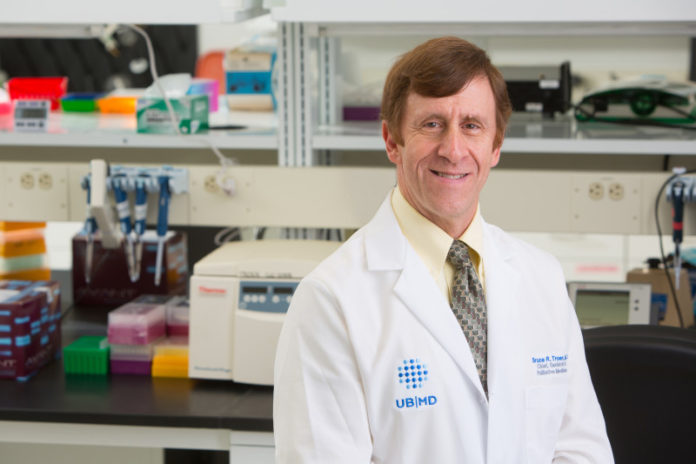
By a tremendous margin — over 95 percent — older Americans choose to live at home or with relatives. Families making that choice should consider seeking the assistance of a geriatric specialist, especially when they see changes in their loved one’s behavior, says Bruce R. Troen, MD, chief of the division of geriatrics and palliative medicine in the Department of Medicine at the University at Buffalo.
“Early in life, as toddlers and youngsters, we accumulate skills, which we call activities of daily living (IADLs), such as dressing, eating and personal hygiene,” says Troen. “Unfortunately — and not necessarily as part of normal aging — some of us start losing those capabilities at the other end of our lives. When that happens, it’s time for a comprehensive geriatric assessment.”
Families should take note, he says, of any decline in a loved one’s ability to accomplish basic activities of daily living. This includes Dressing, Eating, Ambulating, Toileting and Hygiene (the acronym DEATH), and instrumental activities of daily living or community actions — Shopping, Housework, Accounting, Food preparation and Transportation (the acronym SHAFT).
“If there is a decline in any one of these, I would recommend a comprehensive geriatric assessment,” says Troen. “Such assessments can help distinguish reversible causes of cognitive decline from irreversible ones.”
Troen says that some cognitive declines, such as confusion and memory loss, may be attributable to acute illnesses or conditions that are reversible if caught early enough. They include urinary tract infections, vitamin B12 deficiency, pneumonia or hypothyroidism, all of which are common in the elderly, he says. Cognitive symptoms also can be caused by heart attacks, stroke and some infectious diseases.
The multidisciplinary perspective that geriatricians provide is crucial, Troen adds. “Elders may have multiple medical problems and will benefit from this comprehensive approach,” he says. “For example, frailty is a core element of geriatric practice. We need to diagnose what is causing the frailty, just as we would diagnose what is causing confusion or delirium.
“Geriatric symptoms don’t fit neatly into distinct categories; that’s why we call them a syndrome. They need to be addressed by multidisciplinary approaches,” says Troen. Comprehensive assessments also can help primary care providers provide optimal care for elderly patients.
“A lot of what we are talking about here is how to maintain and preserve the healthspan — not the lifespan — of an individual, meaning the period of time where they have a quality of life and level of functioning that is as high as possible,” he says.
When treating geriatric patients, says Troen, primary care providers should consider four domains: medical, psychological, functional and social domains. “All four need to be considered to provide a geriatric assessment,” he says. “Supportive services, such as assistance with food preparation, maintaining a checkbook or transportation may need to be provided by an agency or maybe they can be provided through a family member. It depends on the individual’s set of needs.
“If I can steal a phrase from one of our politicians: It takes a village to care for the elderly,” he says.
Troen, who came to UB in 2013 from the University of Miami, is involved in developing a consulting geriatric practice through the UB medical school to treat patients while providing a training site for future providers, researchers and educators in the field of geriatrics. Currently, he sees patients at the Veterans Affairs Western New York Healthcare System and through UBMD, the practice plan of the UB School of Medicine and Biomedical Sciences. He is a co-investigator on the SUNY Network Aging Partnership, which will establish a statewide infrastructure for strong interdisciplinary research on aging.
New York State’s population of adults age 65 and over is expected to jump by 40 percent during the next 20 years. And with nearly 16 percent of Western New Yorkers age 65 and over, Troen says, Western New York has more elderly adults than the national average, which is 13.3 percent, and the 10th highest percentage of seniors among the nation’s large metropolitan areas.
Story Source:
The above story is based on materials provided by University at Buffalo. The original article was written by Ellen Goldbaum. Note: Materials may be edited for content and length.
